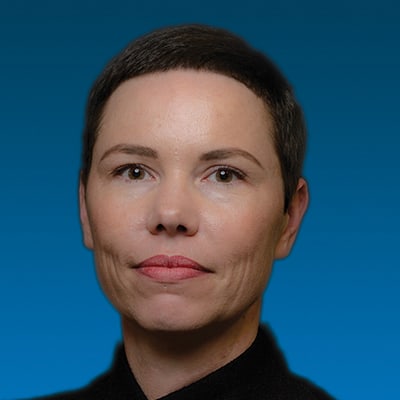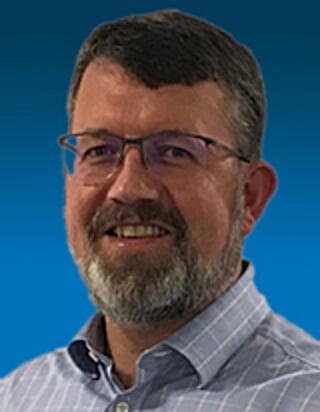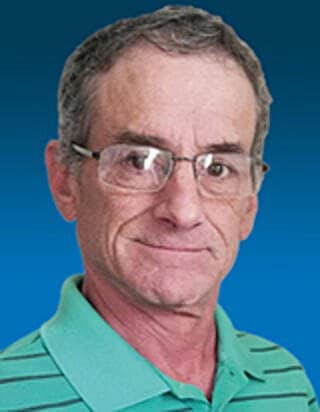
Issue: 67 / January 2020
Foreword
Welcome to the first issue of PSC News in 2020!
In this issue we review several notable events that impacted electricity networks around the world in 2019. CEO Alex Boyd looks back at the year that was for PSC and overviews our approach to working with you, our clients, in 2020. He also highlights some of our interesting projects in 2019, and how we partnered for success with our clients around the world.
The 2010s were a time of tremendous change. 2020 ushers in a new decade full of challenges for our industry, from grid stability to cyber security, to incorporating renewable energy at scale. However, there is good reason to be bullish. We are rapidly progressing solutions for these and other issues, sharing information globally and collaborating like never before: which is further increasing the pace of change. I can’t wait to see what we accomplish this decade.
I hope you enjoy the update, and as always, we welcome your comments or suggestions. If you would like to get in contact, please email [email protected].
Tim Ritchie Chief Revenue Officer
PSC: The year in review
At PSC, we’re looking forward to 2020 with great excitement! But before we jump into the new decade, I’d like to share some recent highlights that have positioned us well for continued future success.
In June 2019, we completed the PSC ownership transition that began in May 2017. I am pleased to say that over a quarter of our staff are now shareholders in PSC and our founders remain as shareholders. I am honored to be a part of this evolution that has allowed PSC to remain an independent, privately held, employee-owned specialist consultancy to the electricity industry. I believe that now is a time of great opportunity for our industry to improve the quality of human lives all around the world, and I believe that we at PSC can play a very important part in this.
2019 was a year of preparation for the next phase of PSC’s life. Our goal remains to help all our clients thrive within the transforming energy industry. We have been thinking a lot about why we come to work every day, to guide us as we engage with our clients. We want to provide expertise to our clients to help them thrive in our changing industry, further deepen our own level of expertise and develop our industry sustainably. Our purpose is empowering people to make a difference and do the right thing.
Our clients had a ton of success in 2019, and we’re honored to have been a part of that.
- One of our UK customers wanted to better utilize existing assets and avoid capital expenditure, so we proposed a virtual statcom solution that would allow them to add additional generation and load to the existing distribution network. They engaged us to build a prototype (https://www.pscconsulting.com/virtual-statcom-innovation-project/).
- Integrating HVDC and AC systems can be complex and time-consuming. We helped an equipment manufacturer close the gap between knowledge of HVDC control behaviors and expectations of clients, to achieve greater client satisfaction with these complex projects (https://www.pscconsulting.com/hvdc-all-grown-up/).
- In North America a client engaged PSC to review their legacy control system modeling infrastructure and propose approaches to implement more open solutions.
- PSC, along with our partner Opten, helped Transpower successfully complete an aerial LiDAR survey (ALS) of 2000 km of transmission lines. The data from the survey is being used to develop PLS-CADD models of the transmission network, which will support line and vegetation management (https://www.pscconsulting.com/aerial-laser-survey-new-zealand/).
In building our roadmap for 2020 and beyond, we are repositioning our services to offer the most value to our clients and partners in the context of a transforming industry. This collaborative work is positioning us with a strong foundation toward achieving our combined success, which to us means delivering on our commitments. At PSC, we see clear opportunities for continued growth by building on our pledge to understand what our customers want and expect from us: strong industry knowledge and engineering and technological expertise, within a trusted partner relationship. And as always, to endeavor to do the right thing.
Thank you all for your support of PSC over the years. We are indebted to you for your belief in us. PSC exists for your benefit as well as the benefit of our team and shareholders. If there is more we can do to provide greater value, or, if you wish to talk more about how PSC is growing, please reach out to me or any of the PSC leadership team – we’d love your feedback.
Happy New Year!
Alex Boyd CEO
2019: A global snapshot
Extreme weather, cyberattacks, failing or underdeveloped infrastructure, and challenges associated with adopting new technologies contributed to some of the most noteworthy incidents in the electricity industry last year. Below we explore some of the causes of these events and how they impacted the reliability, security and stability of electricity networks around the world.

Incident 1: Summer load shedding in Victoria
Date: 24 – 25 January
Location: Victoria, Australia
Description: Over two hot summer days the market operator (AEMO) was forced to shed load across the state of Victoria.
Consequences: Over 200,000 people lost power for up to 2 hours. $34.2 million was spent on Reliability and Emergency Reserve Trader (RERT) payments so the market operator could secure reserve power from participants of its demand response program.
Cause: Record-breaking temperatures in South Australia, and near-record heat in Victoria resulted in high electricity demand. At the same time, supply was constrained due to thermal inefficiencies, unexpected plant failure and urgent maintenance. The market operator activated RERT contracts, however this did not fully meet the shortfall and load shedding was required.
Incident 2: Cyberattack on the U.S. grid
Date: 5 March
Location: U.S.A
Description: A first-of-its-kind cyberattack on the U.S. grid created blind spots at a grid control center and several small power generation sites in the western United States. A flaw in an unnamed utility’s firewall allowed the cyber attacker to repeatedly reboot firewall devices. This caused brief communication outages between field devices at sites and, between sites and the utility’s control center. It’s unclear if the attacker was aware that they were attacking an electric utility. Although there was no risk of outages, the incident temporarily blinded operators to parts of the network. The attack appears to have exploited a known firewall vulnerability for which a firmware update had already been released.
Consequences: The event highlighted the need for significant cyber security process improvements at the victim entity and drew the attention of the industry at large. NERC released a Lessons Learned document urging NERC-registered entities to follow a number of cyber security policies and procedures to reduce the risk of such an event.
Cause: A NERC Lessons Learned document titled “Risks Posed by Firewall Firmware Vulnerabilities” states, “A vulnerability in the web interface of a vendor’s firewall was exploited, allowing an unauthenticated attacker to cause unexpected reboots of the devices. This resulted in a denial of service (DoS) condition at a low-impact control center and multiple remote low-impact generation sites. These unexpected reboots resulted in brief communications outages (i.e. less than five minutes) between field devices at sites and between the sites and the control center.” Click here for the NERC Lessons Learned
Incident 3: Venezuela outage
Date: 7 – 14 March
Location: Venezuela
Description: March saw the worst electricity outage in Venezuela’s history, which lasted seven days and affected most of the country. Outages continued throughout the month, with the country suffering at least 10 days in total without power.
Consequences: Airports and hospitals lost power with at least 43 deaths attributed to the outage. Water supplies were cut off or degraded to at least 2/3rds of the country, and the loss of refrigeration caused shortages in some food supplies. Venezuelan industry was brought to a standstill with estimated economic losses of US$220 million. Most schools were closed and 96% of Venezuela’s telecommunications were disabled.
Cause: The causes are unclear. The outages occurred in the midst of the presidential crisis, prompting some government officials to make accusations of sabotage.
Experts point to other causes.
80% of Venezuela’s power is provided by the San Geronimo B substation, which is connected to the hydroelectric power plant at the Gurí Dam via one of the longest high-voltage lines in the world. Reports of a brush fire near the lines suggest they may have overheated, triggering load rejection mechanisms. A cascading series of unexpected equipment functioning, overloads, activation of safety control systems and forced disconnections by operators led to country-wide outages. There were at least four failed attempts to restart the Gurí Dam station during the blackout. This has been attributed to a lack of maintenance, shortage of fuels for thermoelectric plants, and a ‘loss of experienced personnel’ from Venezuela.

Towards a common understanding of resilience
The power grid’s hazard landscape has changed. Widely accepted power system reliability metrics, long regarded as exemplary models of contingency planning, are no longer enough to prepare for the many new challenges emerging as the grid evolves.
Changes in power demand, the influx of renewables, and the growing adoption of new technologies and grid-connected devices are redefining “normal” grid operations. Meanwhile, the increasing frequency of severe weather events and cyber-attacks represent new threats that need to be addressed as organizations seek to prevent and respond to disturbances on the modern grid.
As a result, the electricity sector has sought to define new practices for improving its ability to recover from these low-probability but extremely disruptive events, while accounting for changes in grid operations and power system dynamics. This effort is both informing and being informed by the concept of power systems resilience, which, lacking a universal definition, is ultimately about a system’s ability to withstand and recover from a disturbance.
The next step for industry stakeholders is to align on a common definition and develop actionable measures to build resilience into their systems and organizations. There is some promising headway on this front; the U.S. DOE-funded Metrics Analysis for Grid Modernization project is seeking to “define, develop, and validate metrics that can be used to measure progress towards…resilience.”1

PSC at DistribuTECH 2020
Where will you be on January 28-30? If you’re part of the some 300+ utilities sending representatives to DistribuTECH 2020 the answer might be San Antonio, Texas.
More than 12,000 attendees are saddling up for the event where they will explore the major technologies and trends in the electricity industry, network and attend sessions from technical experts. There will be more than 250 speaker sessions covering a range of topics that include cyber security, grid resilience and digital twin technology.
DistribuTECH is leaning into its future-forward program this year, inviting Futurist Sophie Hackford to speak at the Keynote. Sophie has captivated audiences with her visions of “Machine Earth,” a 3D internet, and the developing relationship between humans and AI.
DistribuTECH takes place January 28-30 at the Henry B. Gonzalez Convention Center, in San Antonio. You can visit us at booth #926 to discuss grid modernization, NERC compliance, ADMS and EMS technology, network planning and more.
PSC Welcomes New Staff

Chris Goebel – PSC Australia
PSC welcomes Christine Goebel, who joins the team in Australia as the Asia Pacific Sales and Marketing Lead. Chris brings 15 years’ experience helping businesses in Australia and New Zealand better meet their clients’ needs and expectations. She will be undertaking further work on embedding a culture of continuous improvement to our sales process, with a strong focus on client feedback. She welcomes any and all feedback from you, our clients and can be contacted in our Melbourne office.

Richard Lavender – PSC Europe
PSC welcomes Richard Lavender who joins the PSC UK team and is based in Warwick. As a member of the Electrical Engineering business unit, he will initially be providing support to WTI Energy on obtaining accreditation for their two Energy from Waste facilities under the Ofgem Renewable Energy Guarantees of Origin (REGO) scheme. Richard has been a trusted adviser to both large corporations and smaller organizations, where his specialist areas include interconnector and power station connections in the UK. Richard has guided clients through the complex compliance process (Grid Code) and has been credited as the author of the industry adopted process.

Oscar Amaya – PSC North America
PSC welcomes Oscar Amaya, who joins our Vancouver office as a Senior Power Systems Studies Consultant. From 2013 to 2019, Oscar worked for Siemens PTI in Germany and Canada as a Power Systems Consultant with a special focus on synchronous condensers and dynamic network equivalents. Prior to Siemens, he worked as an applications engineer at DIgSILENT Germany for five years, and before that as a Power Systems Engineer for the Mexican Transmission System Operator (CFE) for 11 years. Oscar has a Master’s degree in Power Systems from the National Polytechnical Institute in Mexico City and is familiar with several software tools including PSS/E, DIgSILENT PowerFactory, and SKM.

Greg McBee – PSC North America
PSC welcomes Greg McBee to PSC North America. Greg has over 30 years’ experience in roles such as System Operator, Master Dispatcher and Power Director for utilities including Potomac Edison, Allegheny Power, and PJM. He joins the PSC NA system operations team, which is currently performing RTU and specific new device checkout for First Energy in Ohio, Pennsylvania and West Virginia. Greg is based in Pennsylvania, not far from the First Energy Control center in Fairmont, West Virginia.

Manu Hamblyn – PSC New Zealand
PSC welcomes Manu Hamblyn who joins us over the summer break from completing a Bachelor of Engineering degree at the University of Canterbury in New Zealand. Manu has twenty years’ experience in communications and network solutions both in New Zealand and the United Kingdom and is currently based in our Christchurch office. With the wide range of clients and work disciplines that PSC supports, Manu will gain experience that will benefit his career within the power industry.